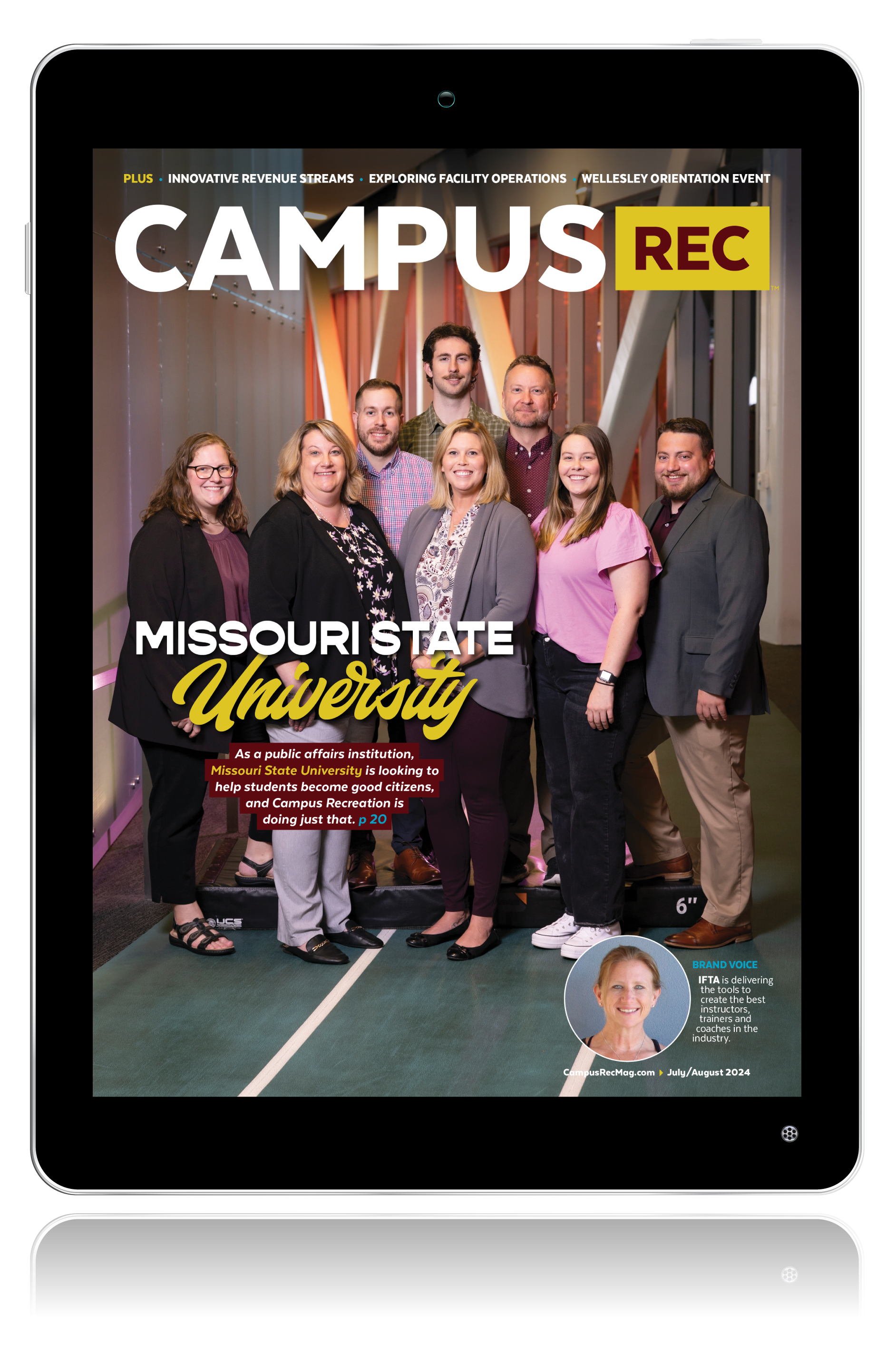In the post-COVID-19 world, Steven Trotter shares you will need to have a menu of offerings available for the various buyer personas that exist.
You may be already processing the pros and cons of each of the solutions that I mentioned in Part One.
Before you begin making your T-chart, start by thinking about who exactly is the ideal participant for the solutions. If you are thinking “students” or “faculty/staff” you are not thinking specifically enough.
As an industry, we need to start illustrating buyer personas for every offering we have. You can have fun with this and give your personas a name, a major, a job, hobbies, etc. but for the examples below, we will just stick to the basics. A buyer persona is a description of the person who is most likely to participate in or purchase a product or service.
Here are several personas to consider:
- In-person: This person thrives on the social aspect of movement experiences. They crave the energy that comes from being around others who enjoy the same workout. They need instruction from the instructor to be delivered to them and right in front of them. Tell-Show-Do is really important to them. They want feedback to be delivered on the spot. They also are a student, faculty/staff or member whose primary work/school environment takes place on campus. They also find value in looking at the offerings and making time on their schedule to attend. Perhaps a deeper dive into a specific format may reveal their primary driver for participating is power, perfection, renewal, conformity/affiliation, sociability/fun, or high energy/challenge.
- Virtual Synchronous: This person needs the accountability of scheduled priorities, but this person also needs the flexibility to travel or minimize commute time. The person may also not feel comfortable participating in a live in-person experience for a variety of reasons. This person values the individuality and the feeling of a one-on-one experience from the comfort of their own home or location of choice. They find value in having the options listed out for them.
- Virtual Asynchronous: This person lives their life on autonomy. They want things when they want it, how they want it and where they want it. This person thrives on being able to build their own journey each day. It’s common this person has a lot of plates spinning, has a strategy to keep them spinning and lives for that life. Today they may feel like completing their workout at 5:30 a.m. while tomorrow they may choose to do a yoga class on-demand at 3:00 p.m. This person may have a work or study environment that is primarily off-campus. This person values a transactional relationship with their instructor. Bottom line is, this person is perfectly fine with being told what to do but just not where and when they will do it.
- Hybrid: This person loves their space on the dance floor. When the DJ plays their jam, they head straight to the dance floor and will find a spot they can claim as their own. You know these people; you’ve seen these people; you may be these people. The world is their dance floor, and the dance floor is their stage. This person thrives on the feeling of community but also values their schedule. They want to participate, but they’d rather save some time by skipping the commute to the studio and joining the group right from where they are.
Understanding buyer personas is a critical part of the process. If you are part of any social media group related to group fitness instructors, personal trainers or small group coaches, you have most likely seen this play out. It’s a modern-day Hatfields and McCoys.
You have some personal trainers who are tried and true to the in-person experience and nothing else could replace it; they feel as online personal training can never compete with in-person training.
You also have online trainers who couldn’t imagine going back to the life of delivering in-person sessions; they might enjoy staying in AirBnBs throughout the world while thriving on the ability to work from anywhere.
When Les Mills VIRTUAL and Fitness OnDemand first came out, group fitness instructors had a heightened sensitivity to it; some felt as if they were going to be replaced rather than seeing the value add to help drive people ultimately into a live class experience.
Understanding the buyer personas might save us from these feuds; the bottom line is each type of offering is set for a specific target audience. After all if you think everyone is your customer, then no one is your customer.
Looking at all these options may be overwhelming. In the post-COVID-19 world, you will need to have a menu of offerings in your galley. It doesn’t have to be an all or none, and it certainly shouldn’t be based on the false hope that consumer behavior is just going to return to how it was in 2019. Things are changing and so should we.
And as you figure out what’s best for you, I encourage you to have the quality triangle nearby. The quality triangle is made up of cost, quality and time. You get to only have two variables at once; if you want something of quality and in an ideal timeframe, it will come at a cost. Just remember the project management process of eliminate, automate and delegate. You don’t have to operate your ship alone.










